As the over-popular south coast of Tenerife is the most neglectable part of the island, I’ll show you in this guide which are the best things to do in one week in the island’s lush north. We’ll visit picturesque villages and lush fields, admire bewitched forests, enjoy black lava beaches and approach the mighty Mount Teide.
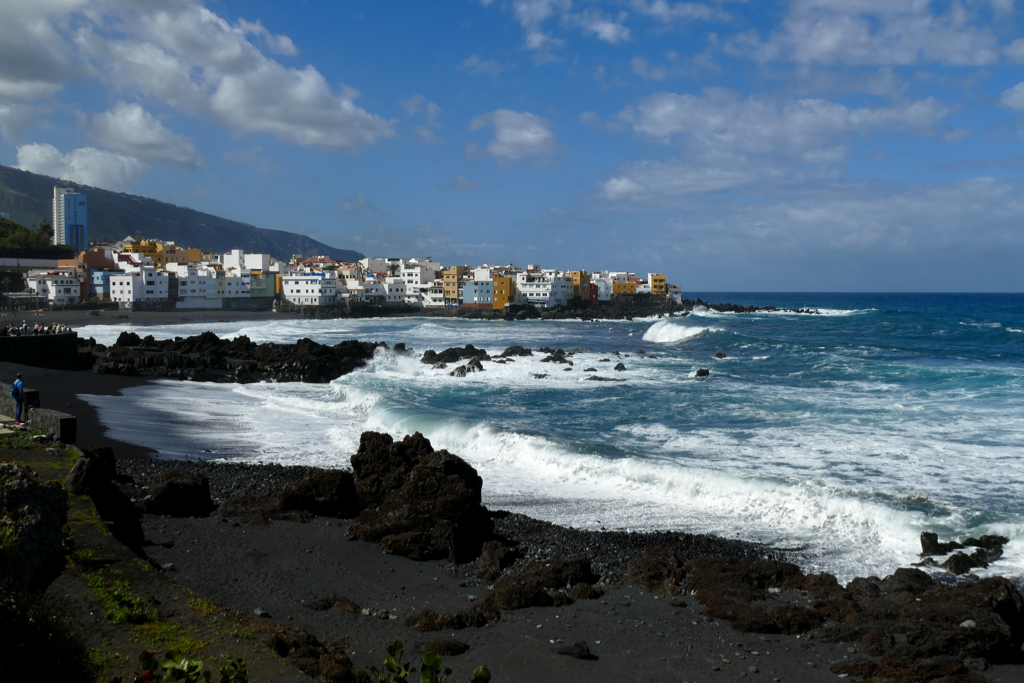
Travelling Back In Time
What held me back from travelling to the Canary Islands for literally decades is what holds back Americans from travelling to Cancun or Negril. These places have a horrible stench of mindless or even destructive mass tourism to them. Frying on some beach? I can do that when I’m 90. Right now, I want to enjoy beautiful nature and cherish rich culture.
Oh, in this context, I definitely should reword the term Americans since Mexicans in tourist-tossed Cancun – as all the other Latinos, for that matter – are also Americans. Nevertheless, that’s a different topic we might get into on another occasion.

Back to the point: So I had basically erased the Canaries from my personal travel map.
And while my prejudices were not completely false, they weren’t right, either. Yes, there are these horrific project-like hotel areas that couldn’t be farther from Canarian life, and there is damaging’n’dense mass tourism. But it’s always just a small, almost isolated area, basically a mentally enclosed ghetto. This way, it actually doesn’t affect the rest of the islands. And this rest tends to be amazingly rich in history and culture and most of all nature.
To cut a long story short: You’ll find what you look for. And good reasons to visit the Canary Islands are as plentiful and varied as the islands themselves.
Second Chance
However, I had been on shorter, unspectacular trips to Fuerteventura before, and the reason for being extra-hesitant when it came to Tenerife was a very personal one. I didn’t have a very happy childhood, to put it mildly, and Tenerife had been the first place where our family went on a winter vacation by plane. Hence, this special spot on the private family globe became a no-go area in my heart.

But now as I went on this island hopping trip, I thought, what the heck, I might as well add Tenerife to the mix.
And what can I say? Coming back with an open mind and a light heart made it possible that Tenerife turned out to be the highlight of my island hopping in the Canaries. Its black lava beaches are so unique, its towns so picturesque, and its lush nature so precious.
I’m so glad I made it back!
Microcontinent
Tenerife is the largest one of the Canary Islands and due to its climatic and geographical diversity as well as differentiated flora and fauna, it is defined as a microcontinent: It actually boasts 28 microclimates!
For you, non-meteorologists: The term microclimate describes a set of atmospheric conditions that are localized in one specific area without in any way affecting neighboring regions. You can be sweating in Tenerife’s capital Santa Cruz while a couple of tram stops away it’s pouring rain in San Cristobal de La Laguna. Therefore, if you are checking the forecast in Tenerife, always inquire about a specific town or beach, never about the island, and even not about a region.
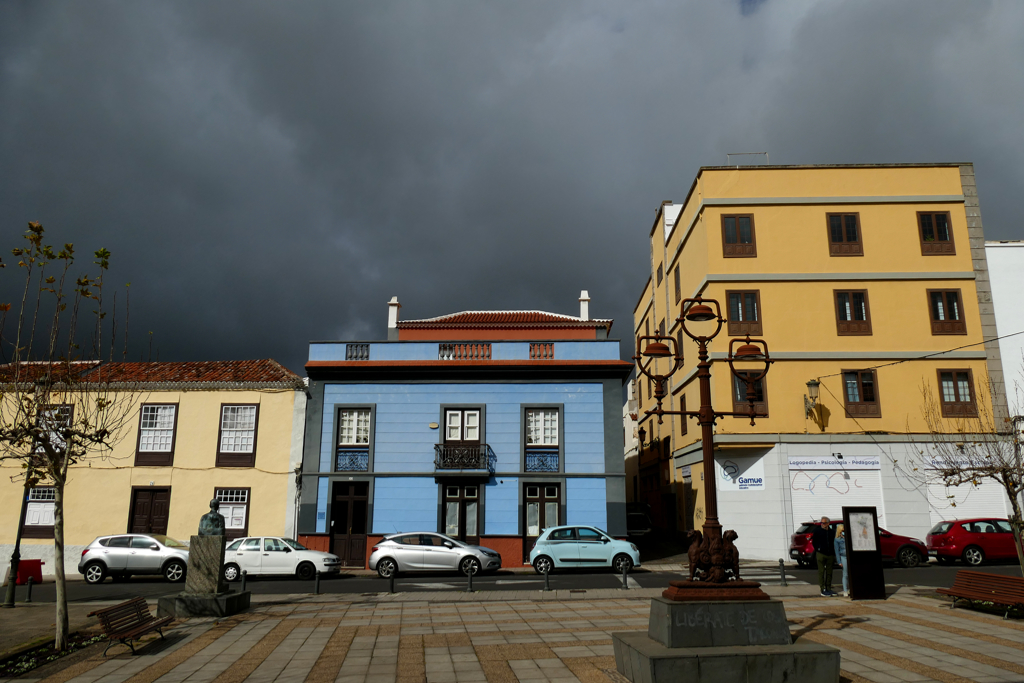
This phenomenon, by the way, is due to the island’s particular topography. The extremely steep rise from sea level up to the snow-capped top of Mount Teide basically divides the island into very distinctive regions.
Northern Pleasures
In general, the weather in Tenerife’s north is cooler and far more humid than on the southern coast where all those holiday resorts are located. This phenomenon makes the north less attractive for beach bums but far more enjoyable for those who appreciate vegetation and natural beauty in abundance.
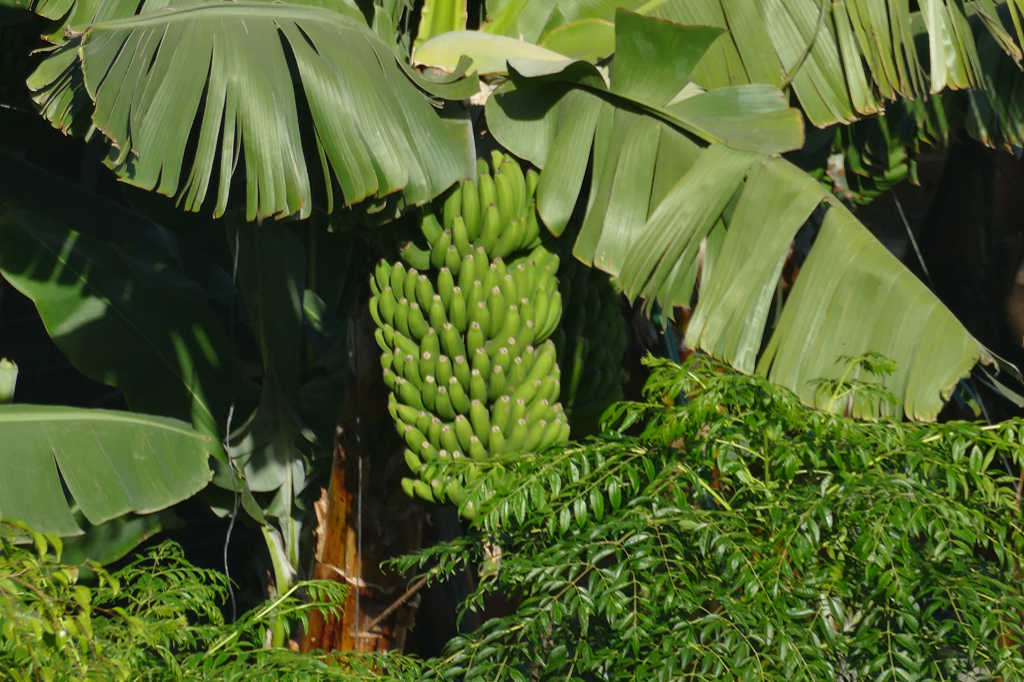
However, due to Tenerife’s excellent system of public transportation, you can experience various microclimate zones in just a couple of hours.
For my week in Tenerife, I chose the northern shores as my base and also explored mainly that area. However, before it was time to leave, I added some lazy beach days on the coast in the southeastern town of El Médano which completed my Tenerife-experience to perfection.
Canary Islands
The Canary Islands are an archipelago in the Atlantic, approximately 1,000 and 1,500 kilometers from mainland Spain and only between 100 to 500 kilometers off the coast of Morocco. So while the Canaries belong politically to Spain, they are geographically definitely part of Africa. Also, they belong to Macaronesia, just like the Azores, the Madeira Archipelago, and Cape Verde. And indeed, the resemblance of the scenery is pretty amazing.
The Canaries consist of seven islands with their own regional government. However, there is yet another inhabited island called La Graciosa as well as many small uninhabited rock isles.

The region owes its formation to volcanism and an underlying hotspot. The volcanic activity continues to this day as the people on the island of La Palma sadly had to experience in 2021.
Due to this activity, there is a large number of bubble grottoes and lava tubes. Therefore, the ancient Canarians lived in natural caves. A large number of natural and manmade caves are still found in Gran Canaria. On those islands where there weren’t any suitable caves, the Aborigines built houses from stone, obviously. Interestingly, their styles and sizes differ from island to island.
Roots
Research has proven a connection between the native Canarians and the Berber peoples in North Africa. The settlers most likely came there while Spain was under Roman sovereignty. Populating was not a one-time event. In a continuous process, different groups of settlers were brought to the islands.
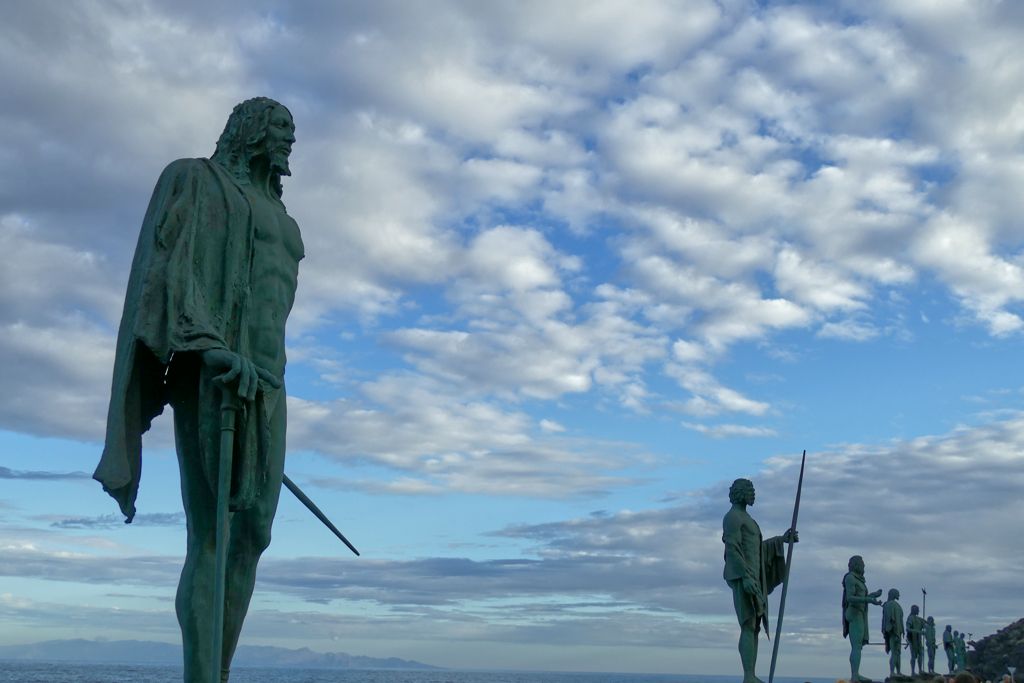
Between 1 BC and 3 AD, there were close economic ties between the Canary Islands and parts of the Roman Empire. Eventually, these relationships diminished and eventually were completely discontinued. Since the inhabitants of the islands had no skills in shipbuilding and no knowledge of navigation, also relations between the islands broke off at this time. Therefore, cultures on the individual islands developed independently until the arrival of the Spanish conquerors in the 15th century.
Tenerife
In 1483, Castilian troops conquered Gran Canaria, the island of La Palma followed in 1492. The following year, Alonso Fernández de Lugo began to organize the conquest of Tenerife. He negotiated with the Court of the Kings of Castile the conditions for the conquest of the last independent Canary Island. Since he was obliged to conquer the island with his own funds, he promised his comrades-in-arms shares of the island’s land and water rights in exchange for their services. Then, colonizers had to settle for at least five years on the island, the plots were planted in the prescribed time and they mainly devoted themselves to the cultivation of the plants.
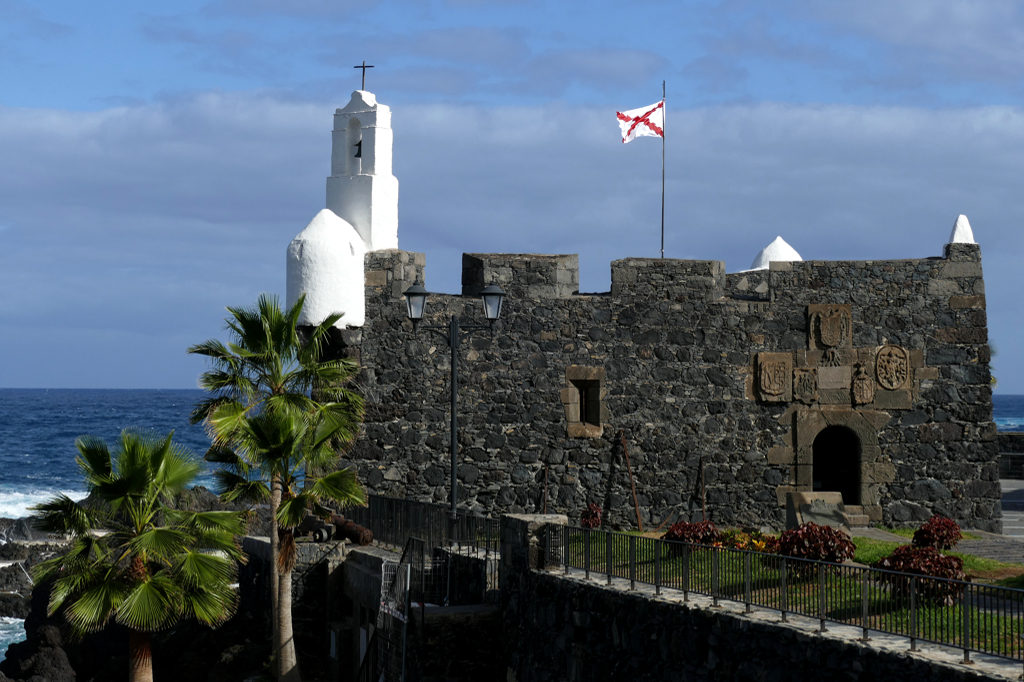
Due to exploitation as slaves, killings in the course of military attacks, disease, and the dramatic worsening of their living conditions, the population of the native Canarians had been reduced to about 5%. Still, the native Guanches remained the largest group of the population that formed after the conquest. The rest consisted of conquerors and settlers from the Castillian mainland and even Portugal. In addition, a large number of Africans were abducted from their motherlands and brought as slaves to the Canary Islands.
20th Century
Although there were no armed conflicts in the Canary Islands during the Spanish Civil War, a large number of supporters of the local government and opponents of the Francoist troops were interned in camps. Many were murdered or disappeared.
After Francisco Franco’s death, the Spanish Parliament passed the first autonomy statute for the Canary Islands in 1982. Today, the Comunidad Autónoma de Canarias is one of the country’s 17 autonomous communities.
Tenerife is a volcanic island and belongs topographically to the African continent. After all, it lies only 288 kilometers off the coast of Morocco but almost 1300 kilometers away from the Spanish peninsula. The island has been a popular holiday destination for decades. This shapes Tenerife’s economy and infrastructure. However, mass tourism is mainly concentrated in the south around Los Cristianos and Playa de las Americas. In the fertile north, however, agriculture remains an important source of income.
Practical Information
How to Get There And Around
Tenerife Norte
Tenerife has two commercial airports. The first one was opened on a high plateau about 10 kilometers west of the island’s capital Santa Cruz de Tenerife in the municipality of La Laguna in 1946. Unfortunately, over the decades, there have been several accidents due to its location. Although security measures have been improved, there are significantly fewer international connections.
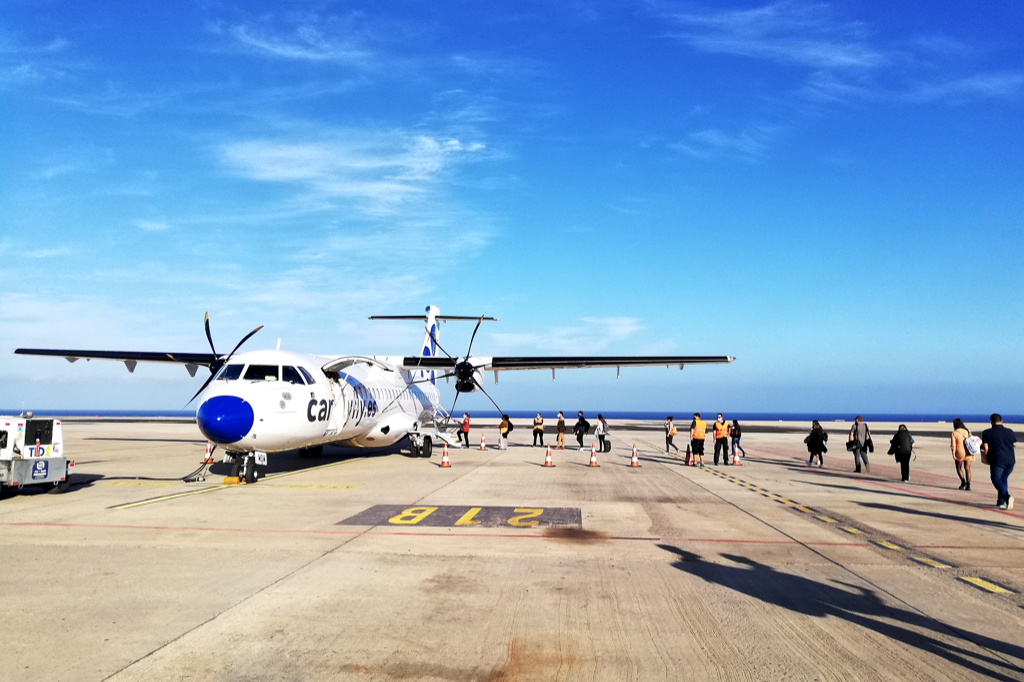
However, there are connections to various domestic destinations including the other Canary Islands such as Fuerteventura, La Gomera, and Gran Canaria operated by local airlines like Binter, Canaryfly, and Air Europa. If you check prices on their websites, don’t get over-excited about the incredibly cheap rates as these apply only to permanent residents. However, even for other passengers, flying between the islands is very reasonably priced and oftentimes cheaper than taking the ferry.
Tenerife Sur Reina Sofia
Far more tourists proceed through the island’s southern airport Tenerife Sur Reina Sofia which was opened only in 1978. In charter traffic, mainly Spanish, German, British, and Scandinavian destinations are served.
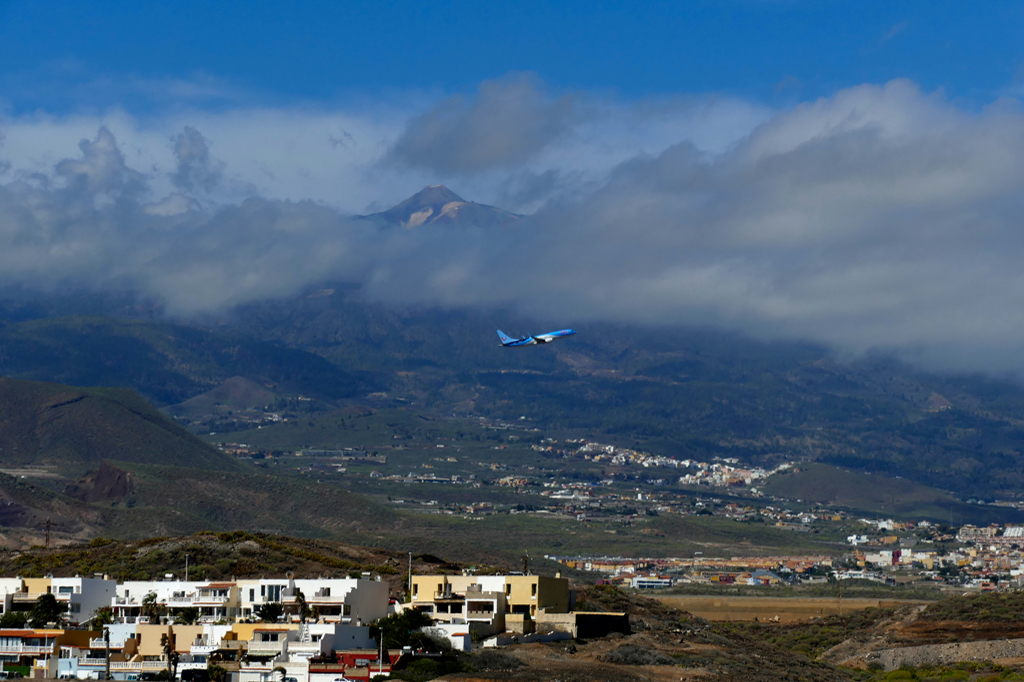
In scheduled services, there are also quite a few low-cost airlines such as Eurowings, Iberia Express, and Ryanair serving European destinations as well as the Spanish hubs Madrid and Barcelona.
By Ferry
There are regular ferry services to Tenerife from the other Canaries as well as from Huelva and Cádiz on the Spanish mainland throughout the year. Whereby trips from Huelva are usually faster than those from Cádiz. Nevertheless, the trip takes between 30 and 40 hours – mind you, Spain is very far away, not only geographically speaking.
From the port of Santa Cruz de Tenerife, Olsen Express and Naviera Armas grant regular ferry services to Puerto de las Nieves in Gran Canaria, Morro Jable in Fuerteventura, and Arrecife on Lanzarote. To get to the island of La Gomera, you need to get on board in Los Cristianos.
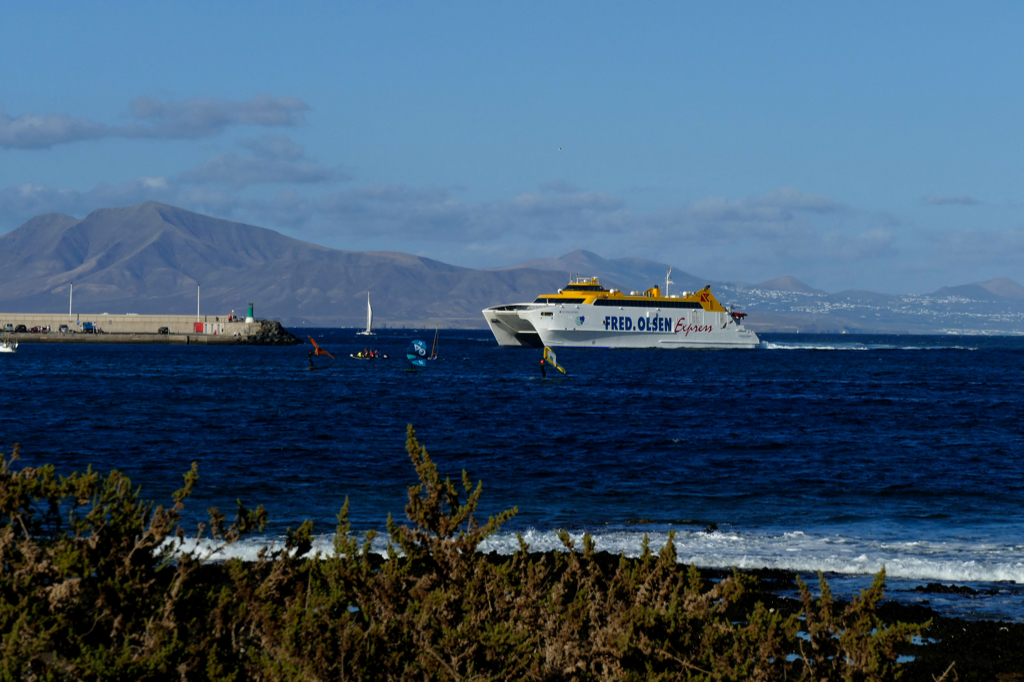
Taking the ferry is not necessarily cheaper than going by plane. Yet, it is a more eco-friendly way of travelling. Also, it is the only option if you have to take your car across the sea vehicle.
However, my trip from Gran Canaria to Morro Jable in the south of Fuerteventura took about 2.5 hours, and I paid over 50 €uros, which is by no means a bargain.
If you’re on a flexible schedule, you should check thoroughly the prices at different times of the day as well as between the individual companies as they can differ a lot. Also, just like the airlines, the ferry companies grant residents of the Canary Islands a considerable discount.
Land Transport
If you haven’t booked a package where the travel company arranges the shuttle from the airport or jetty to your hotel, you have different options for how to get to your final destination. The most comfortable option is taking a cab, obviously.
However, you save lots of money by taking one of the public buses.
From Tenerife Norte, bus #30 shuttles travellers to and from Santa Cruz de Tenerife as well as San Cristobal de La Laguna. #20 goes to and from Puerto de la Cruz, and #343 goes south to Los Cristianos and Costa Adeje but also connects the two airports.
If your flight is to or from Tenerife Sur, you can take bus #40 to Los Cristianos and Costa Adeje, #111 or #711 to Santa Cruz de Tenerife. #343 goes north to Puerto de la Cruz as well as to Tenerife Norte.

As there are many more connections to the different towns around the island, you better check out the website of TITSA, Tenerife’s local bus company.
By the way, just like on the other islands, locals call buses la guagua.
I’m not driving, but if you want to rent a car, you can do so right at the arrival hall. There are different car rental companies to choose from.
Getting Around the Easy Way
So yes, exploring the island by public bus is highly recommended. You spare yourself the terrifying narrow roads in the mountainous hinterland. You don’t need to look for a parking spot in cities like Santa Cruz. It’s comfortable, it’s reliable, it’s cheap – what’s not to like?
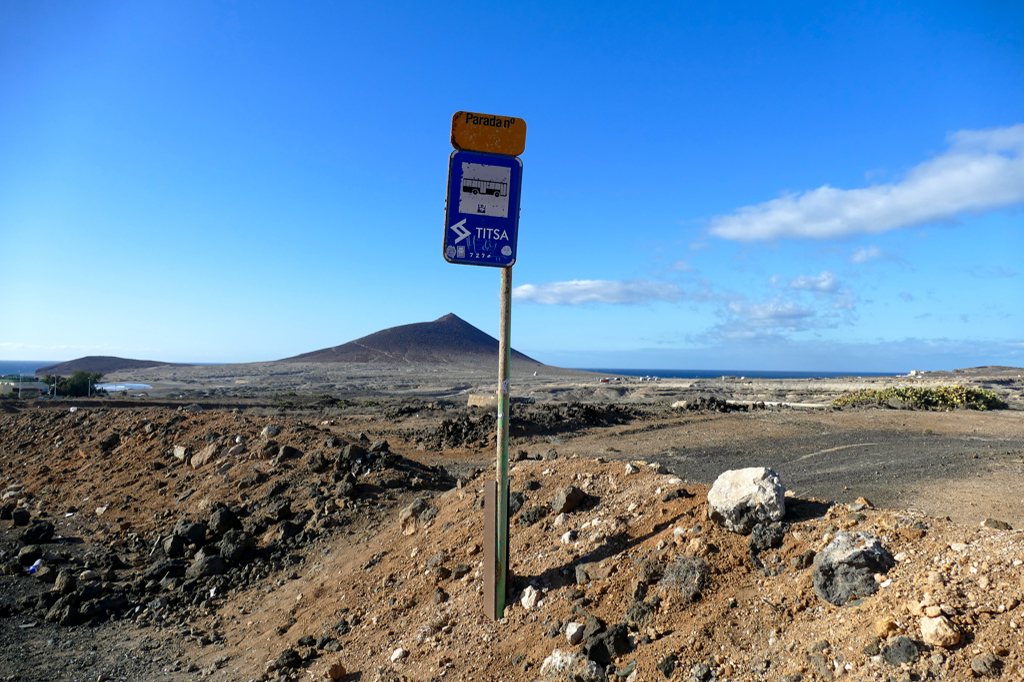
To take the bus, you can always obtain a ticket from the driver. Prices depend on the distance, obviously, and you can pay cash or by a bank card that’s equipped with NFC. You save 10 percent of the single ticket price if you buy a round-trip for the same day.
TITSA, the local bus company, have a great website where you’ll find all the connections and prices and everything you need for an easy trip. There is even a section that’s especially catering to tourists.
Discounts and Deals
Now I’ll introduce some travel passes that are great for frequent travellers. To obtain all these passes, you need to get a ten+ chip card that you then charge. This card costs 2 €uros and you’ll get them at ticket machines and bus stations. Since you also charge them there, this is not such a biggie.
If you plan on travelling to a distant place or various times in one day, a Travel Card for one day might be your best bet. Starting with the first use, it’s valid for 24 hours for unlimited trips in buses and trams all around the island.
If you intend to travel a lot during your stay, you can obtain this Travel Card for seven consecutive days, and then it costs only 50 €uros, hence a bit over 7 €uros per day.
Note that both options are also available in the ten+ App.
If you travel only from time to time, you can charge your ten+ card with an amount of up to 100 €uros and then conveniently pay for all your trips with it. I used to charge mine with 20 €uros. Since the machine on the bus shows you the remaining credit on your card, you’ll always know when a recharge is necessary.
One Last Tip
Since taking the bus is such a great way to get around, many people do so. Therefore, you should make sure to be at the station at least ten to fifteen minutes before departure. Also, you shouldn’t just linger but stand in a queue – or possibly start one.
Immigration and Customs
The Canary Islands are part of the Schengen Area and the customs area of the European Union. Since they are not part of the tax area for excise duties and VAT, certain products are way cheaper than on the mainland. Looking at the gas prices, for instance, will probably make you cry. Also, cigarettes and liqueur are much cheaper, and, most importantly, cosmetics and perfumes.
While there are hardly ever personal border controls within the Schengen Area, customs controls when coming from the Canary Islands are still possible. Therefore, make sure to keep your shopping within the allowed limits.
Organized Trips
As I pointed out, there are many many wonderful spots in Tenerife, bewildering and wild, waiting for you to be explored. Basically, all those places can be easily visited by public transport. However, in certain cases, it can still be a good idea to join an organized tour, especially if you have only a limited amount of time.
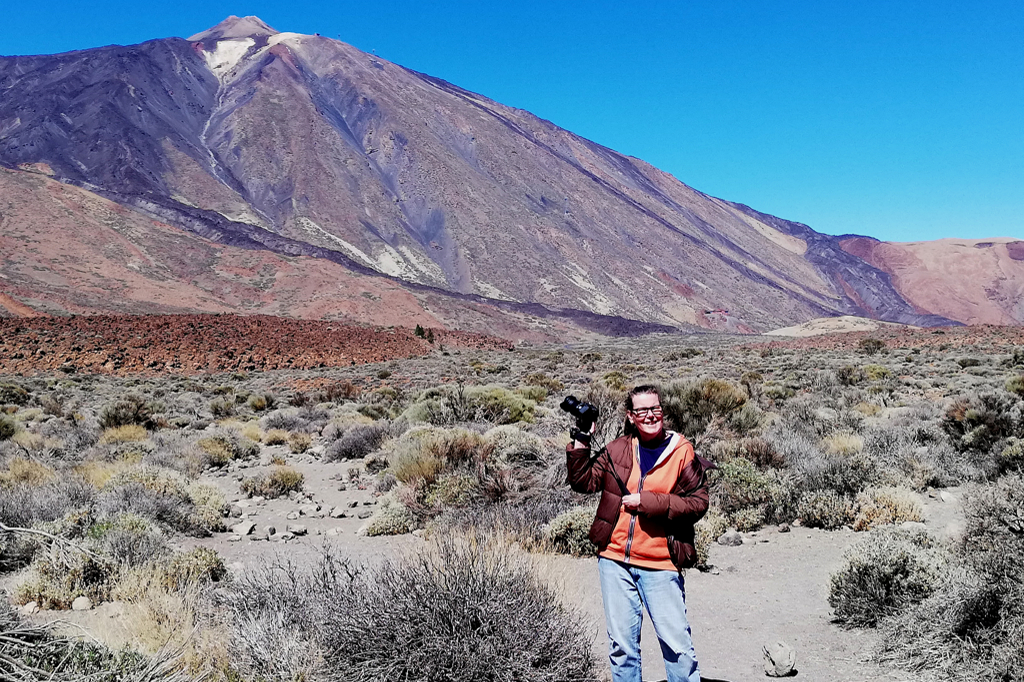
For instance, I wanted to see some of the most idyllic villages along the north coast which is absolutely possible by bus. But I also wanted to take a tour to the Mount Teide National Park. At the end of the day, I was very happy to find a tour that included both: I went with them comfortably to all the lovely villages without constantly checking the time and the bus schedule, and eventually, we went to the most alluring spots at the national park before they safely drove me back to my hotel.
Will say, the pure fact that you can visit places self-organized doesn’t necessarily mean that it is the most convenient option. Therefore, when planning your trip, make sure to check out these great tours of Tenerife:
Where to Stay
Tenerife has been a popular tourist destination for decades. Especially on the southern coast around Los Cristianos and Playa de las Americas are many huge hotels and apartment complexes.
Nevertheless, you’ll find at least a small choice of lodging options even in the tiniest villages. In each and every hamlet, there will be a smaller guesthouse or privately rented apartments.
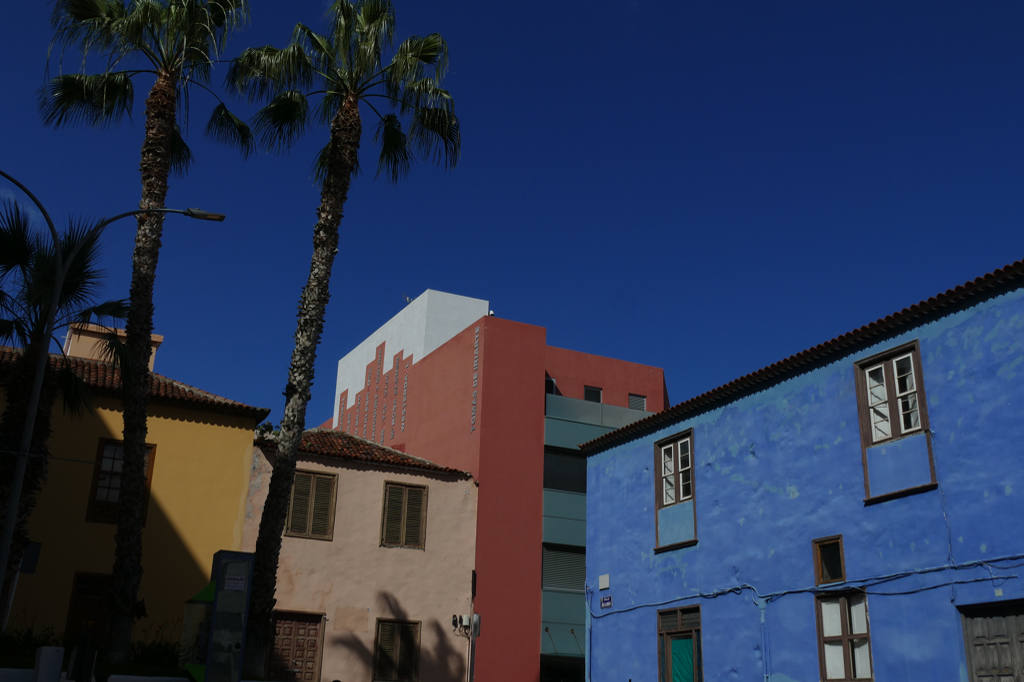
I spent almost my entire stay at a hotel on the outskirts of Puerto de la Cruz, mainly due to the central location on the northern coast. For the last couple of nights, I moved to El Médano in the southeast – for the beach and the proximity to the airport from where I went home.
However, here is a search box that will help you book places to stay across the island*:
Booking.comWhat to Eat
Tapas and Menú del Día
Just like on the Spanish mainland, there is an overwhelming number of bars and restaurants also on the Canary Islands. There, you can enjoy a glass of beer or wine with some tapas, varied hot and cold snacks. They can be slices of serrano ham, diced or grilled cheese, papas bravas, tiny potatoes with a hot sauce, boquerones en vinagre, marinated fresh anchovies – the list is endless
Normally, you’ll get some small complimentary tapas with your drink – at least olives or peanuts. A selection of two or three tapas can actually replace a meal. However, you can also order a ración, hence, a serving, or a media ración, a half-sized serving.

When you are really hungry, the menú del día might do. It’s usually a three-course meal. You can combine it to your liking from different starters, main courses, and dessert options. Often, the price of around 10 €uros includes water or even wine. However, the menú del día is usually just a lunch option and not offered at dinner time.
As in most other European countries, tipping is rather optional in Spain. It is not compulsory, but an appreciative gesture. Also, you don’t need to calculate a certain percentage. Rounding up to the next full €uro might be a bit chintzy. However, adding one or two €uros will normally do.
Bakeries and Delis
There are many small bakeries and delis selling all kinds of sandwiches and empanadas, savory pastry pockets. If you have a sweet tooth, you’ll also find a great variety of delicious pies.
Therefore, if your hotel does not offer any breakfast, just enjoy your morning coffee and a sandwich at one of the many bakeries, rubbing shoulders with the locals.
Markets and Supermarkets
Just like in Italy, many Spanish supermarkets have a food counter. Here you can buy simple dishes like grilled chicken, meatballs, and fritters as well as sides like potatoes and salads.
I’m not claiming that this will be the fanciest meal of your life. Nevertheless, if you just need to grab a filling snack, I find it’s a valid option. Also, it’s a truly Spanish experience since it’s definitely not a touristy dining place.
Most of Spain’s big, often covered farmers’ markets offer far more than just amazing fruits, veggies, cold cuts, and cheeses. There are also counters where you can enjoy a coffee or even a light wine along with a delicious snack.
You definitely should not miss out on this authentic experience.
When to Eat
Now, Spanish mealtimes can be challenging.
Years ago, I visited the Costa de la Luz together with my then 7-year-old daughter. We were used to northern European mealtimes and had to find tricks to avoid going hungry. Not only are classic mealtimes much later than expected. In addition, many restaurants close their kitchens’n’doors in-between. For instance, our favorite pizzeria in Conil de la Frontera re-opened only at 10 p.m. By then, we were starved.
To survive, we developed a distinct schedule by making Spanish lunch hours our dinner time. I kid you not. Around 4.30 p.m., shortly before restaurants closed to re-open only late at night, we went for dinners. Admittedly extremely early dinners.
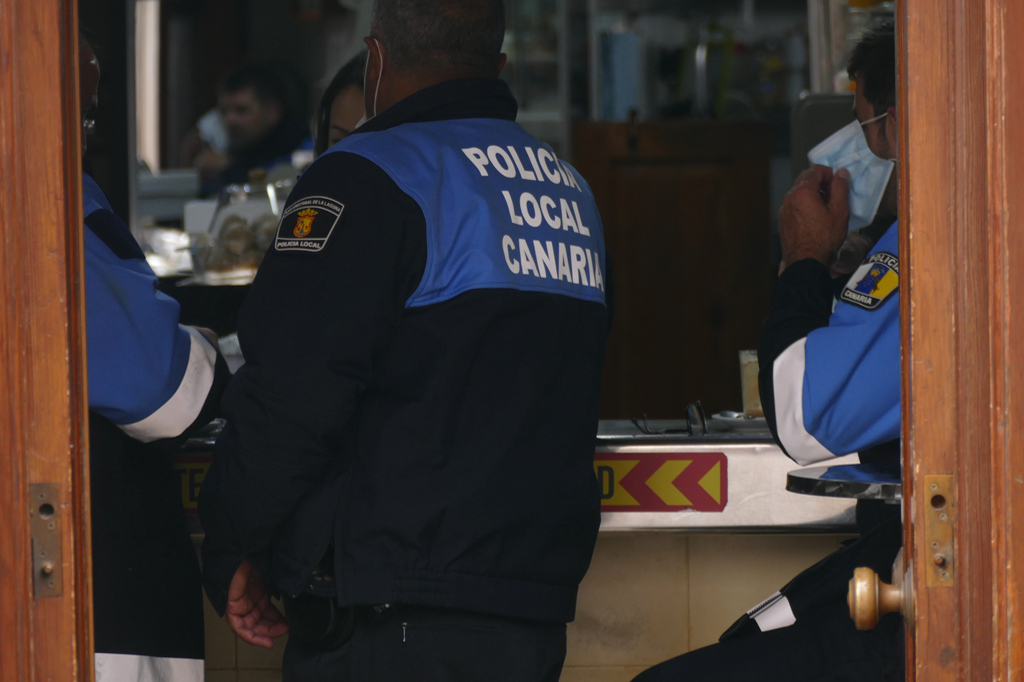
With this story being told, I need to point out that Conil de la Frontera is mostly frequented by national tourists. Therefore, the restaurants there cater to their needs. Since on the other hand restaurants in Tenerife are often catering to international tourists, you’ll probably find an operating eatery at any time of the day. Unless you are visiting a hamlet hidden all the way back in the hinterland.
By the way, I’ve written an entire post about travelling in the company of kids – especially as a solo parent.
Cash, Cards, and Deals
Until now, 20 European countries replaced their former local currency with the €uro starting in 2002. Obviously, Spain is one of them. The exchange rate is 1 US$ = 0.92 EUR as of March 2024. However, you can check today’s conversion rate on this page.
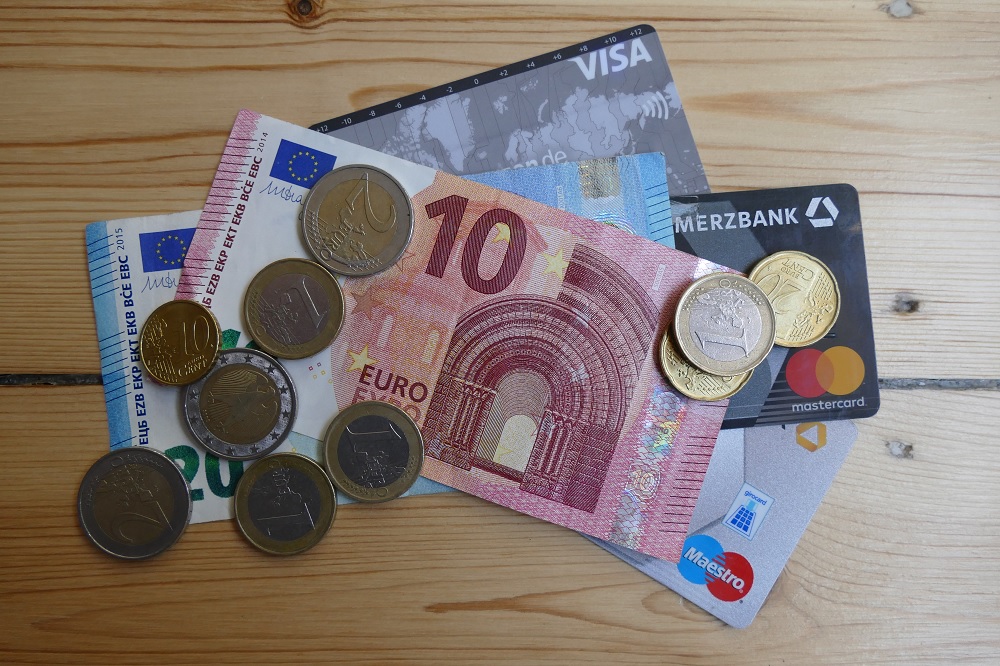
Especially after the Covid pandemic, even small businesses prefer that you pay by credit card, and preferably contactless.
Language
Before the Spanish conquest, each Canary Island spoke its own type of the Guanche language. Due to the systematic pushback of the local culture by the Catholic conquerors, only fragments of the language exist to this date. You mostly find those traces in the names of places.
Today, the official language is Spanish, obviously. To learn some basic Spanish or just brush up on your knowledge, there are various apps and online tools. I personally like to practice with babbel. However, due to international tourism, most people working in tourism and gastronomy speak at least some rudimentary English and very often also German.
Nevertheless, here are some ground rules for Spanish pronunciation since saying for instance city names wrong can cause some problems. If people don’t understand where you want to go, they won’t be able to give you directions.
Say It Right
The good news is, that in general, you read Spanish the way it’s written. Although, the letter C is a bit tricky for foreigners. Placed before an A, O, or U, it’s hard and pronounced as K. Followed by E or I, it is pronounced like an English the. Now, if you want that th-sound in combination with A, O, or U, the letter Z comes into the picture. So you have to pronounce Canaria Kanaria, and Plaza Platha.
On the other hand, if you want C to sound hard in combination with E or I, you make it a QU – but you don’t hear the U. Fine example: Tequila, which you pronounce like Tekkila.
This applies also to the letter G. If it’s followed by A, O, U, or a consonant, it’s pronounced like the G in guitar or Gran. To make a G sound hard before an E or an I, they squeeze in a mute U – like in guilt. If G stands before an E or an I, it is rather breathed than pronounced – a bit like the H in house.
The same applies to the letter J. You always pronounce it like the H in house.
The last trap is double L which is not pronounced like an L but like a Y in yellow. So it’s not Pulpo al la Gallega is not Galega, but Gayega. When a word is written with just one L like la, it’s a simple and innocent L.
Connection and Communication
Since June 2017, no roaming charges have applied within the EU with a European mobile phone contract. This applies to all 27 countries of the European Union as well as Iceland, Liechtenstein, and Norway. It pertains to all contracts.
When roaming is not available, you can connect to the internet at basically every museum, eatery, and, of course, hotel.

If you insist on being online 24/7, you can get a SIM card. The cheapest one would be Lycamobile while Orange Tu Mundo has the widest coverage.
In Spain, they use plug types C and F. Their voltage is 230 V and the frequency 50 Hz. Whereby, as nowadays all these chargers have integrated adapters, in general, the voltage and frequency don’t really matter.
By the way, you’ll find comprehensive travel info in my post World’s Most Complete Travel Information – an indispensable globetrotter-classic.
Places to See
Below you find links to posts on all those beautiful places I visited during my trip to Tenerife. In each of those posts, you’ll read inspiring stories and get valuable information that will make your own trip smoother and more enjoyable. If you seek general information on Spain, go to this post.
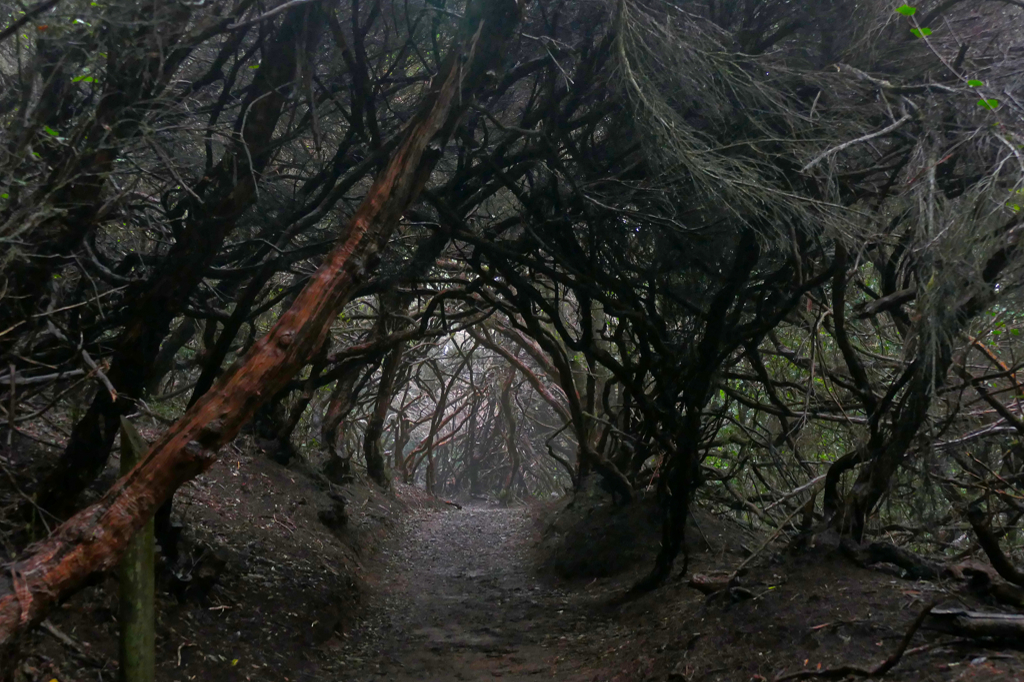
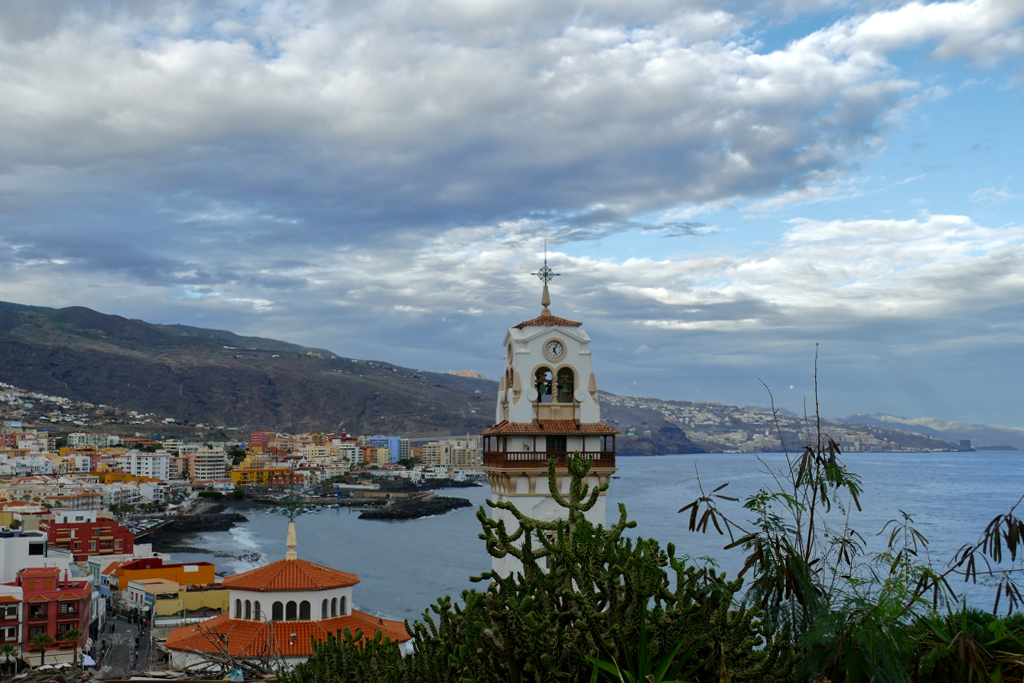
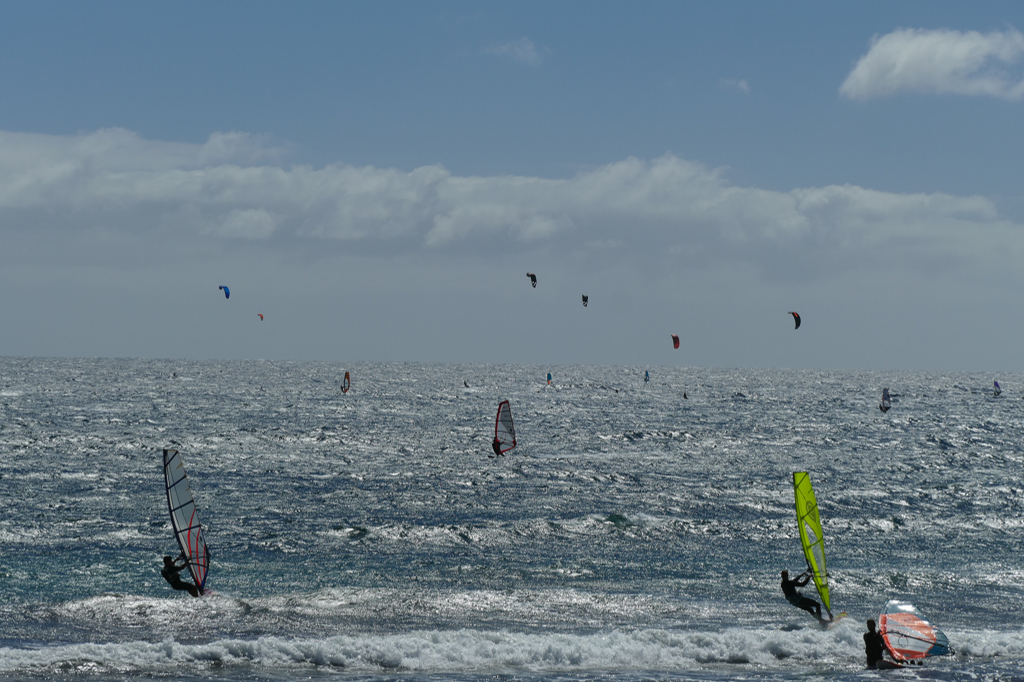
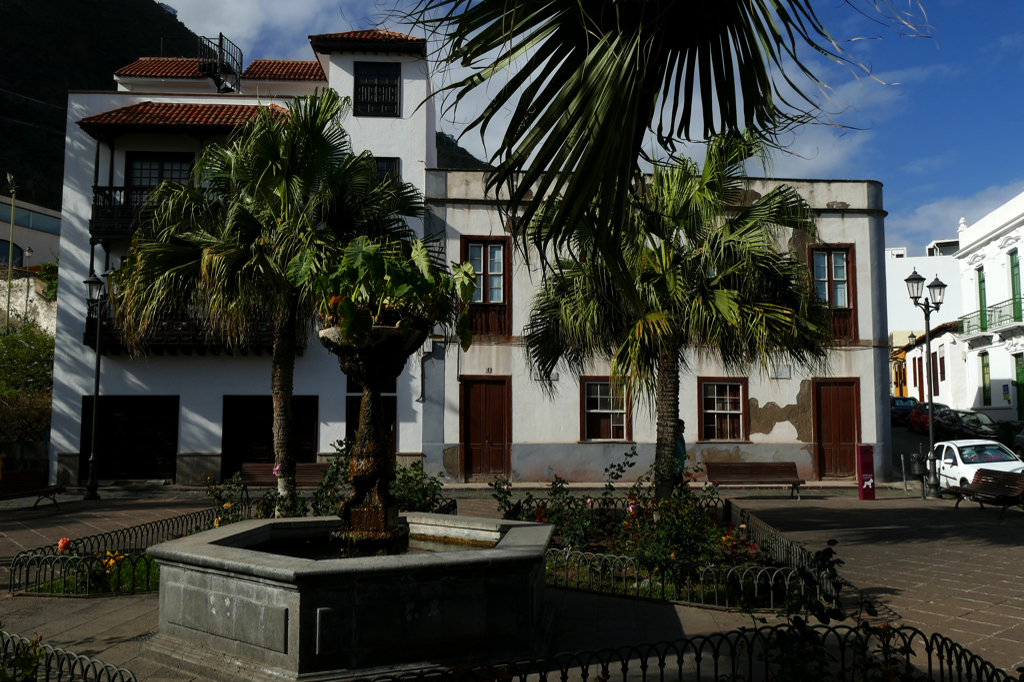

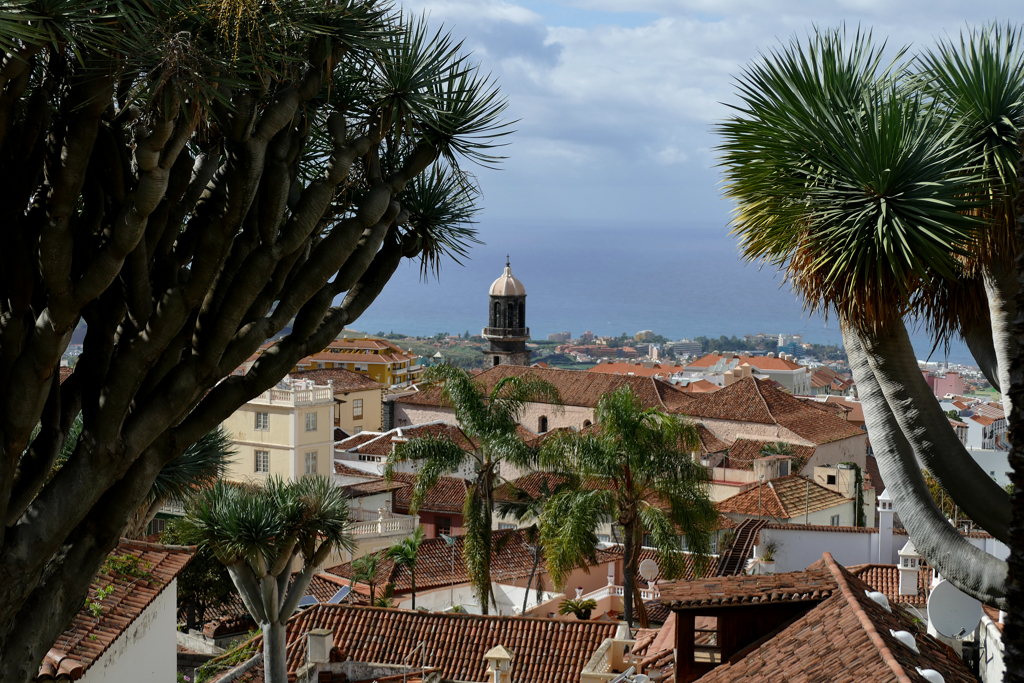

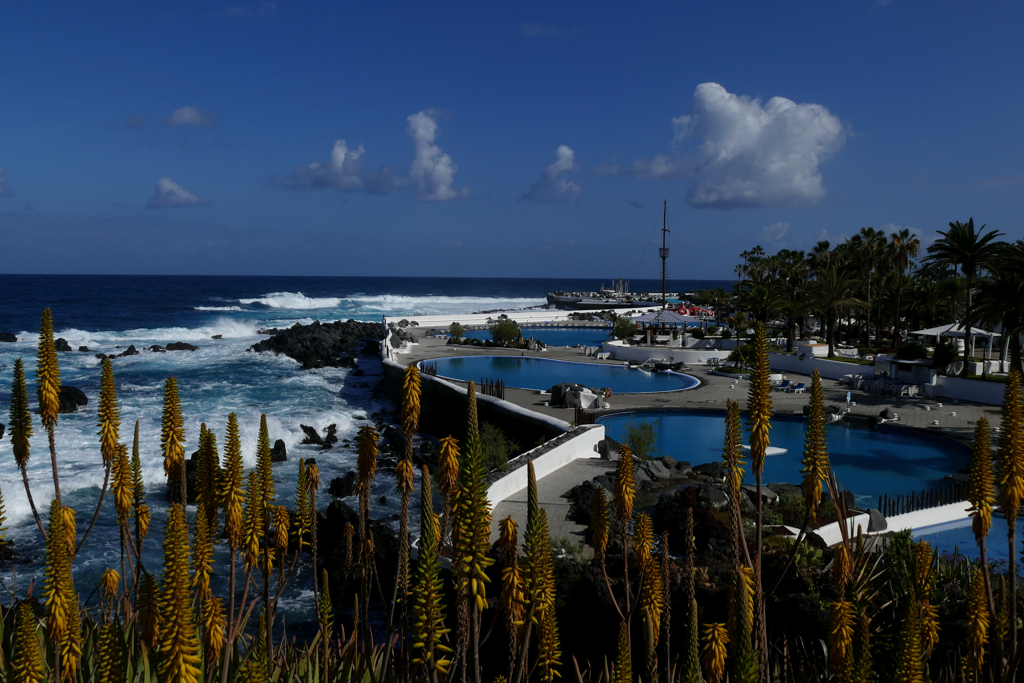

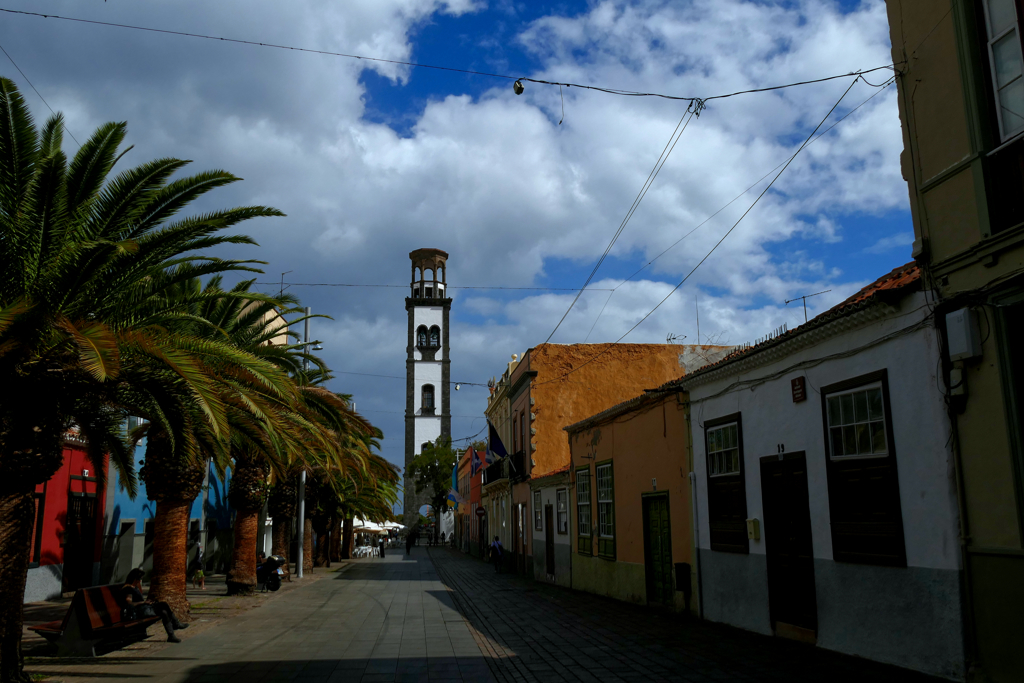


Map
On this map, you can see where all the wonderful places I’m linking to in this post are located. This way, you can put together your itinerary accordingly.
Clicking on the slider symbol at the top left or the full-screen icon at the top right will display the whole map including the legend:
Pinnable Pictures
If you choose to pin this post for later, please use one of these pictures:

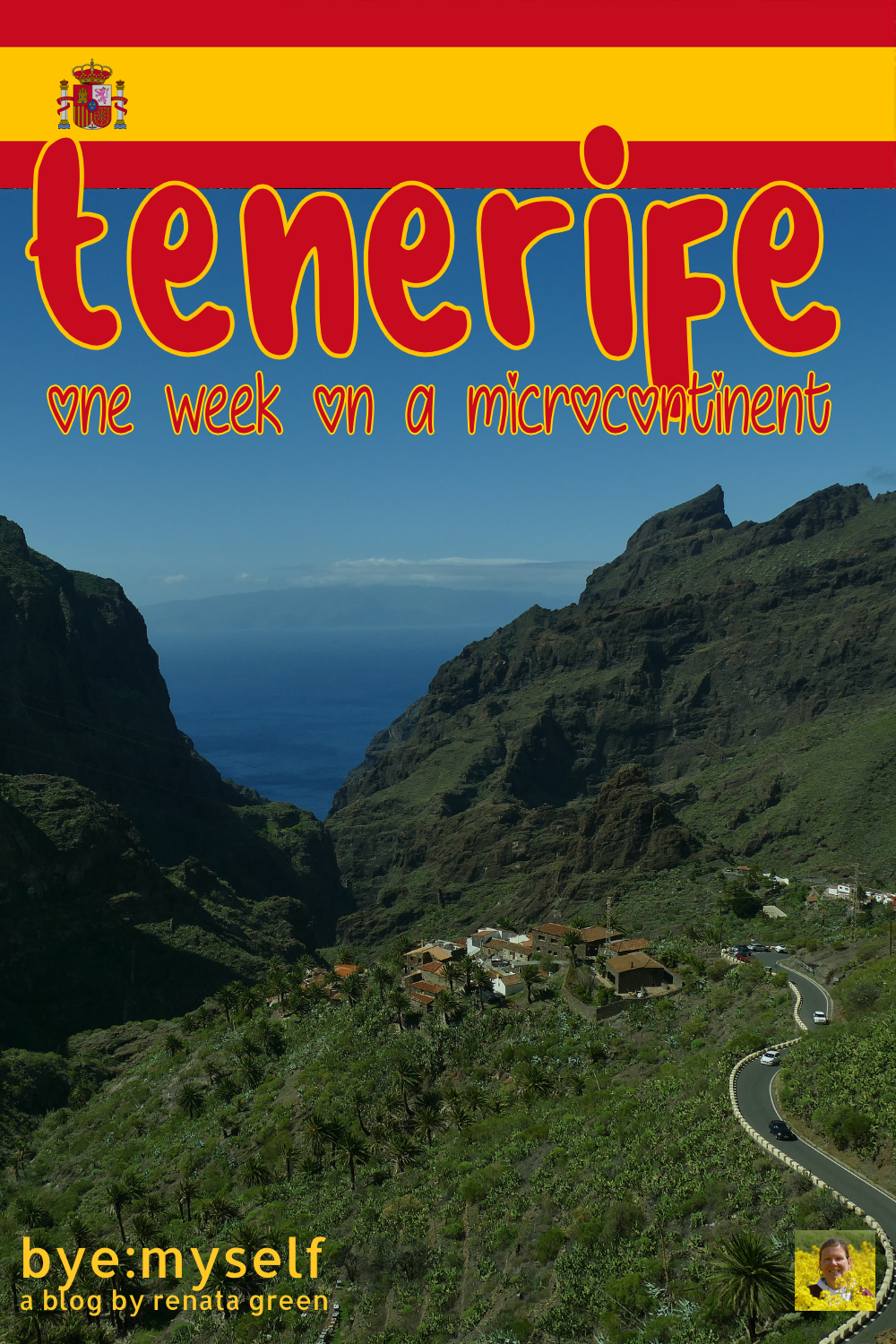
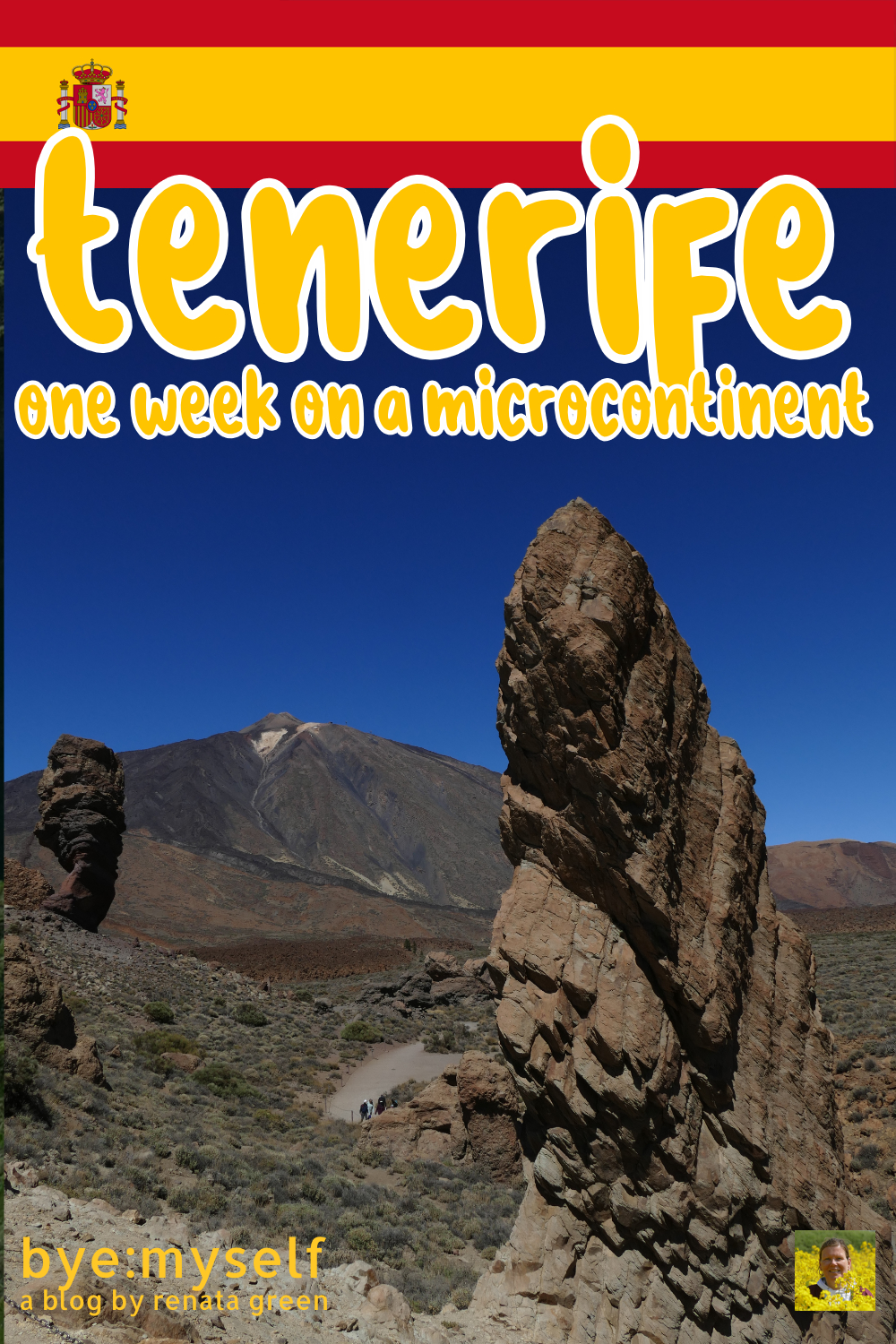
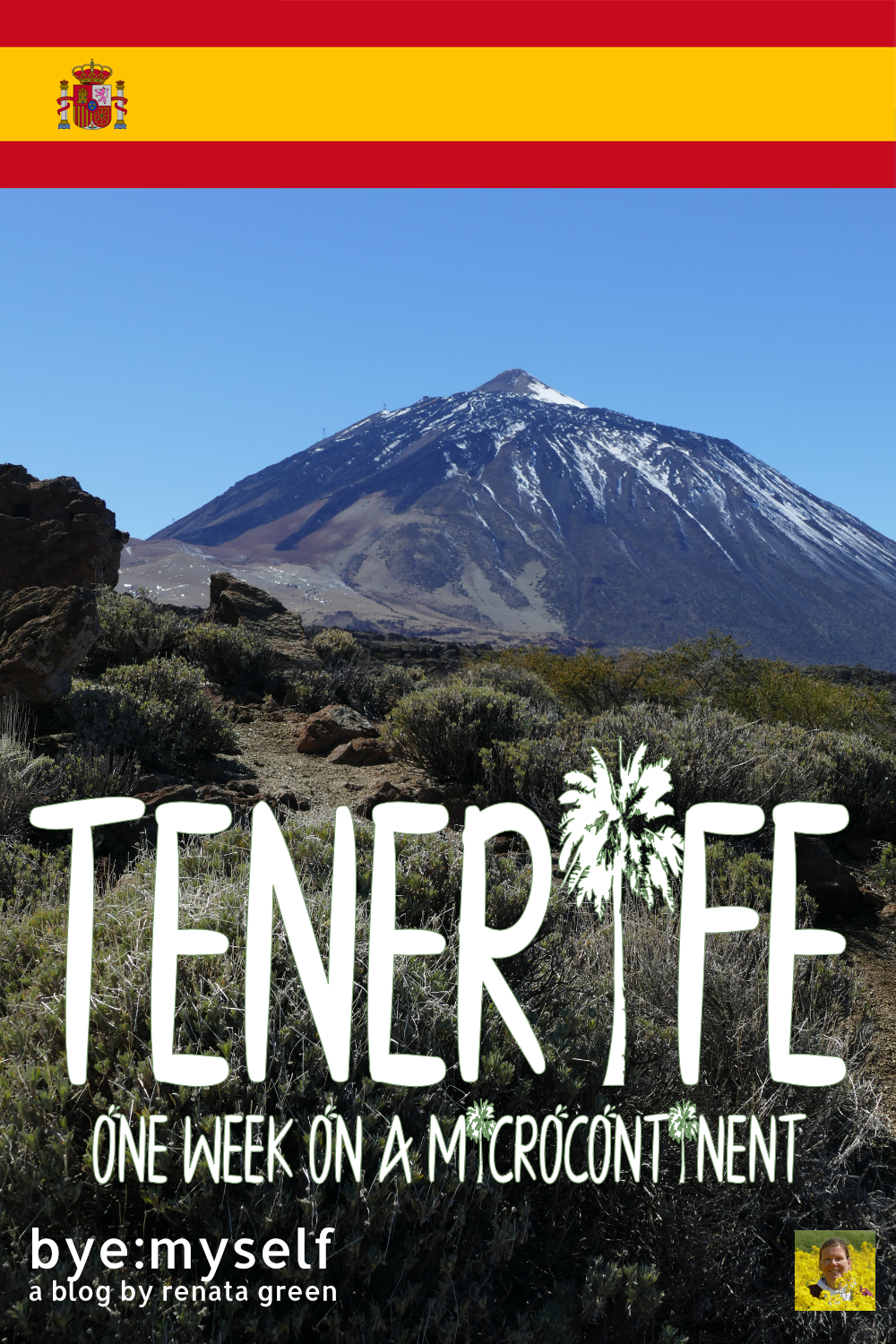
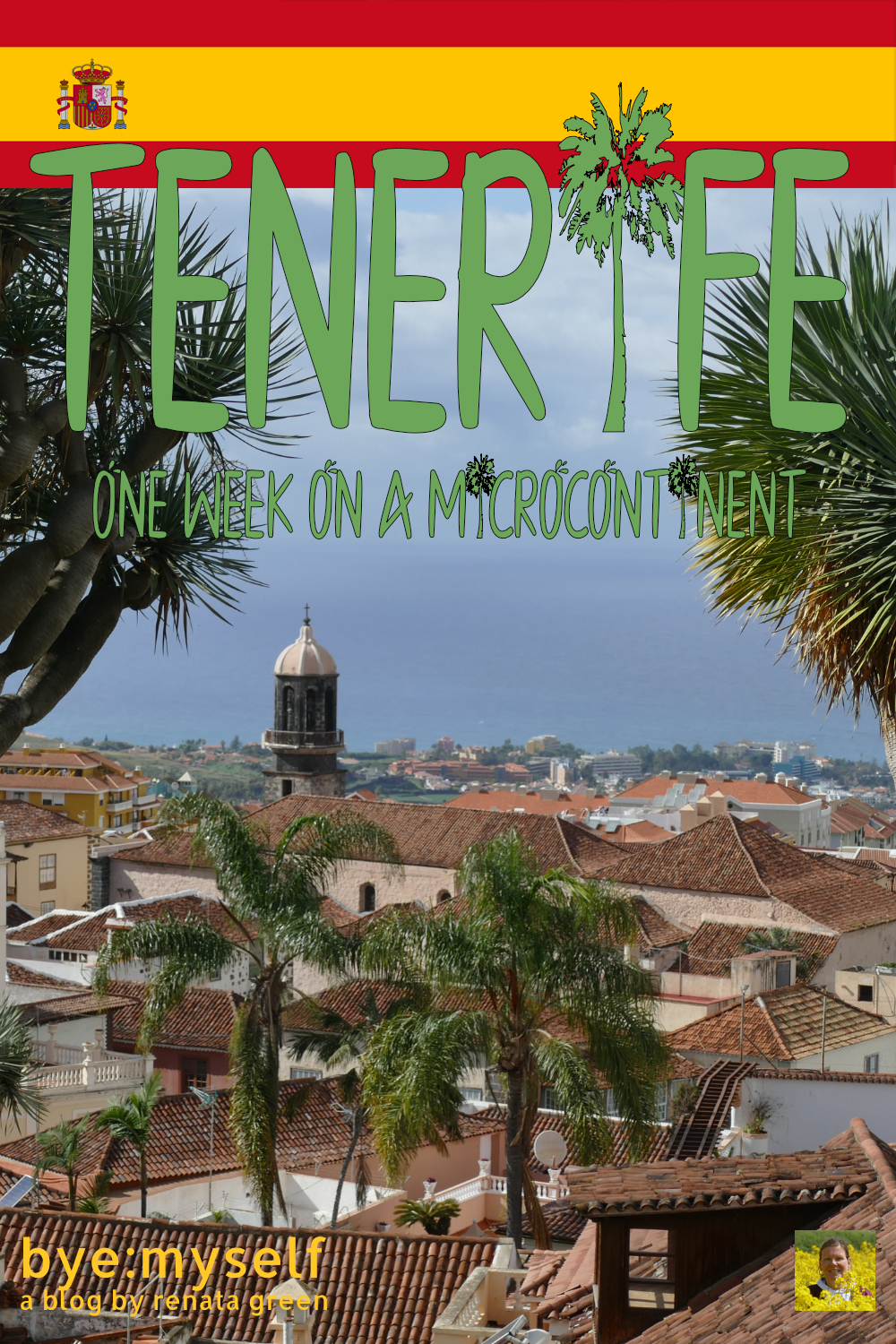

Note: This post is being regularly completed, edited, and updated – last in March 2024.
Did You Enjoy This Post? Then You Might Like Also These:
Guide to PUERTO DE LA CRUZ – a Town Full of Contrasts
PUERTO del ROSARIO – Fuerteventura’s Underrated Capital
From FELANITX to SANT SALVADOR – an Uplifting Day Trip
Antoni Gaudi in BARCELONA: A Guide to Modernism
One Day in SOLLER, DEIA, and VALLDEMOSSA – Famous Places for Famous People
Day Trip to the Albufera Nature Reserve Outside Valencia
Best Things to do in TENERIFE – one week on a microcontinent
Guide to LAS PALMAS – Your Perfect Base to Explore GRAN CANARIA
* This is an affiliate link. If you book through this page, not only do you get the best deal. I also get a small commission that helps me run this blog. Thank you so much for supporting me!
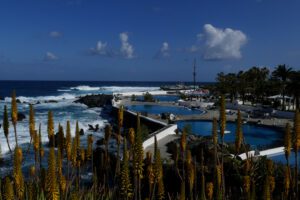

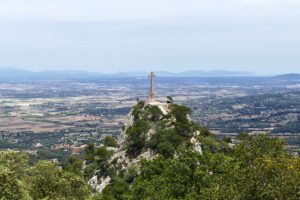


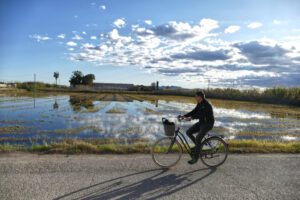

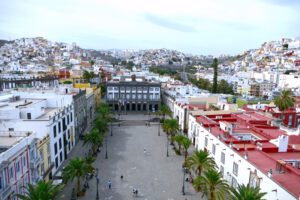
I’ve learned so much from this post and have followed so many of the tips and advice on my trip to Tenerife. Thank you for sharing your travel experience!
You’re very welcome – helping others planning their travels is my mission, hence in your case: Mission accomplished 😉
Hello
Could you please recommend the tour that you used for Mount Teide National park and villages?
Hi Alison, sure, it’s a small operator in the center of Puerto de la Cruz: Tourist Information Erik & Renata, Calle Quintana 7. Hope this helps 🙂
This post has opened my eyes. I had dismissed Tenerife because it’s a place all the loud party people go to from England (like Benidorm) but I now think I need to give it a better chance and maybe focus on the northern part of Tenerife. I knew it was beautiful but good to know it has quieter parts too.
Great post as always
This was exactly the image I had when it came to Tenerife. And I think it’s like this in certain places – but it’s easy to avoid them, and the rest is just wonderful 🙂
Very helpful itinerary/guide for Tenerife. The history of connection with Africa makes me curious.
You covered everything anyone would need to visit Tenerife! I love how you include the history and give pointers for buying travel passes.
Thanks for this ready plan for a trip around Tenerife because I didn’t know how to go about it myself! And you give everything down to the smallest detail, and I’m ready to pack my bags. Lots of practical information to help you plan your trip and see the most beautiful and exciting places in Tenerife.
I know so little about Tenerife but have learned a lot from this comprehensive post, thank you! I’m glad that you enjoyed your second trip there 🙂
Thank you – yes, I did enjoy it a lot. So much, that it became my favorite of the Canaries 😉
Thank you – yes, I did enjoy it a lot. So much, so that it became my favorite of the Canaries 😉
That’s awesome you have three ways to go there. That the bus connected to the airports. Well, I haven’t been there but definitely worth keeping this information. Thank you for sharing!
I visited the Puerto de la Cruz in the north as a family reunion trip! We visited the Loro Parque (with grandkids) and the beach. I must do another trip to check out the rest of Tenrife and follow your list. It was interesting to read about the ‘roots’ and learn the connection between Canarians and Africans. It was good to know that ferries are possible modes of transport between the different Canary islands. Great blog post! 🙂
Wow, that sounds amazing! The Loro Parque is quite famous, however, I skipped it this time since there were so many other amazing things to do.
I love how colorful all the buildings are here.. and while haven’t heard of Tenerife before, now have added it to my wish list
Funnily, the best parts of Tenerife are the less visited – good for us connaisseurs 😉
I love Spain but I know so little about the Canary Islands! The more I read about Tenerife or any of the Islands the higher they climb up our bucket list. The food alone is amazing looking but I love all the outdoor activities you can do and enjoy as well!
To me, they were just those horrible mass tourism ghettos – but that’s only a small part of the island – the major part is just amazing!
wonderful guide! I agree: nature exploration is a must there! So beautiful and very unique. I find Tenerife very calm and chill place, I am sure the week there passes in the flash. at least it did happen to me during my honeymoon
You spent your honeymoon in Tenerife? How fun! Yes, most parts are calm, however, the south coast must be a zoo. That’s why I avoided it completely.
This is such a great comprehensive guide to Tenerife. Thank you for sharing. Tenerife, itself, has never been on my bucket list, but the Canary Islands as a whole have been a place that would like to see. I would love to experience the mixture of culture and history that Tenerife has.
It’s exactly the great mix that makes Tenerife so worth visiting.
I’ve always thought of Tenerife as a great weekend getaway, but you’ve convinced me otherwise. I would love to move between islands by ferry to see more of those black sand beaches, the landscape and villages. I would definitely want to seek out that 1,000 year old tree.
There is so much to do – you’d need many, many weekends to enjoy it to the max 😉
We have timeshares there and never visited. Love your guide. Would love to see the 1000 yo tree!
That sounds like such a waste – why haven’t you visited?
Enjoyed my read & viewing all the captures of Tenerife, saved it to my to travel place as a must visit to experience back in time there. Especially love the thousand years old tree, really well keeping it. Cheers Siennylovesdrawing
Good plan – it’s a wonderful place!
Great information & post! I love that you even included some ways to help cut back on costs during the travel.
I’m a poverty-jet setter, after all 😉
Your post has convinced me that we need to plan a visit to Tenerife for a longer stay. We loved the short day visits we had. But it was not enough to see this island in depth. Glad to know your return visit was so good. I actually like the idea of moving between islands by ferry. Good point about being flexible about your timing to save some money. We would probably do a mix of visiting spots on our own and look for some good tours that do combine spots. Need to get this on the planning board.
After my stay on four Canaries, Tenerife turned out to be my favorite – but please don’t tell the others, I don’t want them to be sad 😉
What an interesting post. I especially love the 1000 year old tree. Just imagine the stories it could tell if it could talk!
Yap, about times when tourist weren’t roaming planet earth yet 😉 😀